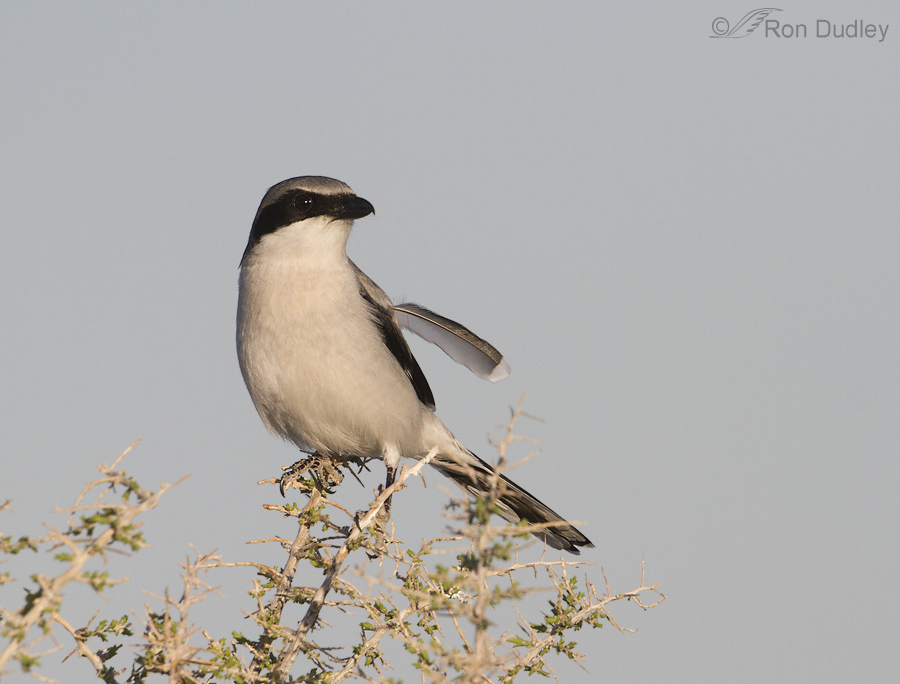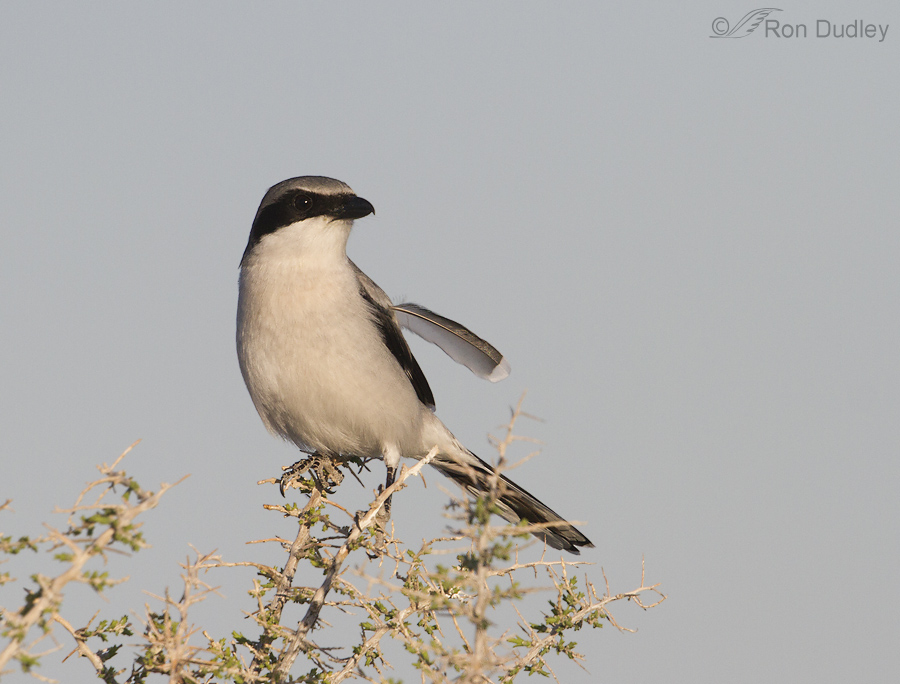There are two interesting things about this Loggerhead Shrike that I thought were worth a closer look.
1/3200, f/7.1, ISO 500, Canon 7D, Canon EF500mm f/4L IS II USM +1.4 tc, not baited, set up or called in
The first is obvious – a broken wing flight feather. I noticed this bird on two different mornings last week on Antelope Island. It’s one thing to completely lose a major feather (as in during the molt) but I imagine it’s quite another to have one broken and flopping around like this. It must be aggravating and cumbersome to the extreme during flight but this bird seems to be coping with its handicap just fine. I suspect that the feather will break off soon (if it hasn’t already) but these adults don’t begin molting until mid-summer so it’ll be without one of its fully functional flight feathers for a long time.
Another somewhat unusual feature of this image is the double catch-light. This happens fairly often with disturbed water (waves) in the foreground because of all the reflections it produces but in this case the only water was behind the bird so I don’t know the cause. The primary catch-light was from the early morning sun but the other may have been caused by almost anything, including a reflection off the bumper or windshield of my pickup.
Sometimes double catch-lights don’t bother me, particularly if they look natural but in this case (to my eye) it doesn’t and I also find it distracting so…
if I were ever to print the image (I likely won’t) I always have the option to remove it as I’ve done here.
Obviously this isn’t a great image but I thought it was interesting nonetheless.
Ron




I wonder why I feel uneasy when looking at images of shrikes, but NOT at kestrels??? The feather sticking out Is interesting, if not aesthetically “proper”…as are the comments it has generated…
Ron,
The left catch light is a different color, a different intensity.
So, two different sources of light.
I wonder if birds “know”
not to look directly at the sun.
I wonder if the shrike was aware of the second source of light and if that “glare” would affect it’s behavior.
Your original picture causes me to wonder.
SUE
Yes, I believe they “know” on at least some level, Sue. I’ve often, very often, seen them with the eye facing the sun partially closed, apparently to protect it, while the other eye is fully open.
Two reasons to visit the Twice-anomalous Loggerhead Shrike post: see the excellent photography and learn something new – the ability of the bird to replace a feather before the next molt.
Thanks, Dave. That info from Dan was new to me also. And that’s something I’ll definitely remember!
How fascinating to learn that plucking the feather could trigger new growth. We have often watched birds coming to our feeder ‘work’ on a broken feather and assumed that it was gone for the season. Thank you Ron – and Dan.
We all learn “stuff” around here don’t we, Elephant’s Child?
Hi Ron,
Interesting photo. This bird may not be doomed to be without a flight feather until molt. Very often, a bird will be able to successfully pluck a broken feather. If that happens, it will stimulate the feather bud below to produce a new feather now. If the end of the feather remains in place it will be necessary to wait until molt, as you have said, but a feather completely absent will be replaced sooner. The tiny muscles that hold a feather in place will eventually loosen their grip as the bird continues to work at the broken feather, allowing it to be plucked
Dan Gleason
That’s really interesting, Dan. I didn’t know they could replace an injured feather before the normal molt. Thanks a lot.
Very interesting Ron! Thanks for sharing!
Charlotte
Thanks, Charlotte.